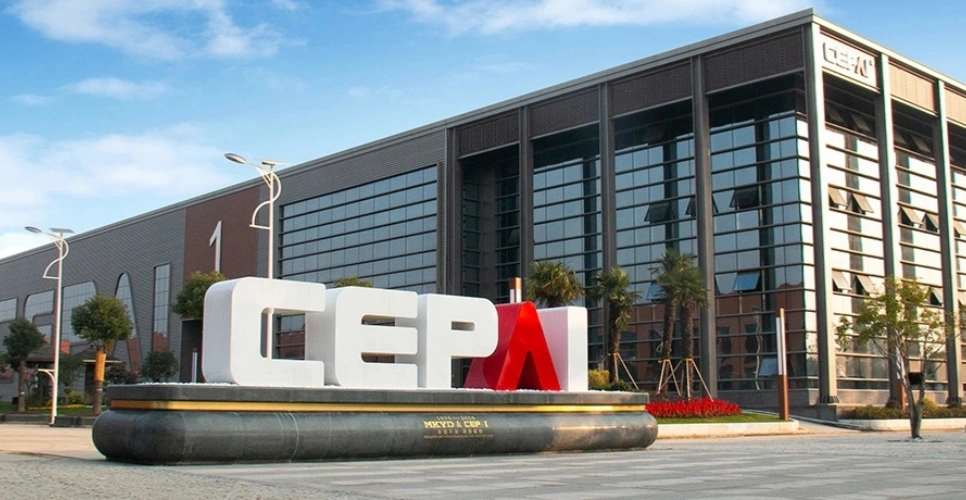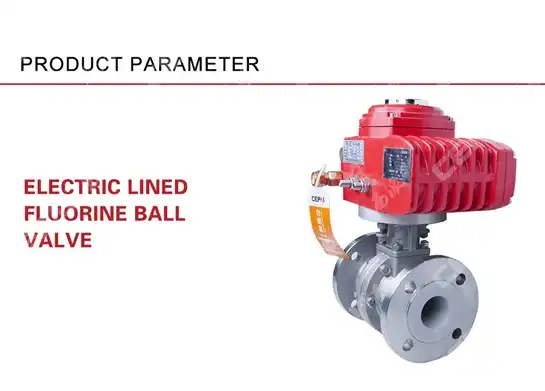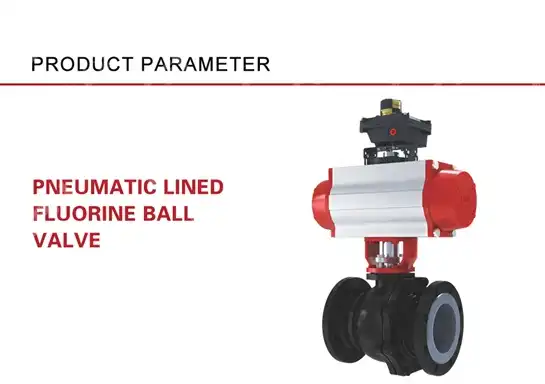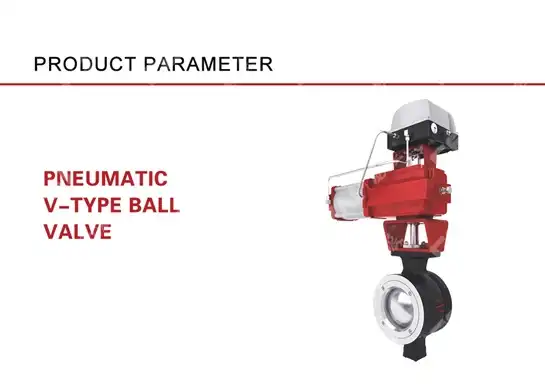Solving Common Flow Problems with the Right Ball Valve
Industrial operations face critical flow control challenges daily, from unexpected pressure drops to complete system shutdowns caused by valve failures. When production lines halt due to flow irregularities, the financial impact can reach thousands of dollars per hour. The right Ball Valve selection and proper implementation can eliminate these costly disruptions while ensuring optimal system performance. Understanding how to identify, diagnose, and resolve common flow problems with precision-engineered Ball Valve solutions is essential for maintaining operational excellence across petrochemical, power generation, and manufacturing industries worldwide.
Understanding Ball Valve Flow Dynamics and Common Issues
Industrial flow systems encounter numerous challenges that can significantly impact operational efficiency and safety protocols. Ball Valve technology offers superior solutions for addressing these persistent problems through advanced engineering and precise manufacturing standards. The fundamental design of a Ball Valve creates a straight-through flow path when fully open, minimizing pressure drop and turbulence that commonly plague other valve types. Flow control problems typically manifest as inconsistent pressure readings, reduced throughput capacity, or complete system failures during critical operations. These issues often stem from improper valve selection, incorrect installation orientation, or inadequate maintenance protocols. Ball Valve systems excel in these scenarios because their quarter-turn operation provides rapid response times and reliable sealing performance under varying pressure conditions. The spherical closure element in a Ball Valve rotates within precision-machined seats, creating a metal-to-metal or soft-sealed interface that prevents internal leakage. This design eliminates the flow restrictions and pressure losses associated with gate valves, globe valves, and other traditional flow control devices. When properly specified and installed, Ball Valve assemblies can handle extreme temperatures, corrosive media, and high-pressure applications while maintaining consistent flow characteristics throughout their operational lifecycle. Modern Ball Valve technology incorporates advanced materials science and manufacturing techniques to address specific flow challenges. High-performance alloys, specialized coatings, and precision-engineered sealing systems enable these valves to operate reliably in demanding applications where flow consistency is critical for process optimization and safety compliance.

-
Critical Flow Control Challenges in Industrial Applications
Manufacturing facilities across multiple industries experience recurring flow control problems that directly impact production efficiency and operational costs. Inadequate flow regulation leads to product quality issues, equipment damage, and unplanned maintenance shutdowns that can cripple entire production schedules. Ball Valve solutions address these challenges through superior design characteristics and proven performance reliability. Pressure fluctuations represent one of the most common flow control problems in industrial systems. These variations occur when conventional valves create excessive turbulence or fail to provide adequate flow regulation under changing operational conditions. Ball Valve technology minimizes these issues through streamlined internal geometries that maintain laminar flow patterns even during rapid opening and closing cycles. Temperature-related flow problems pose significant challenges in high-heat applications such as steam systems, thermal oil circuits, and chemical processing operations. Traditional valve designs often suffer from thermal expansion issues that compromise sealing integrity and flow control accuracy. Advanced Ball Valve constructions incorporate thermal compensation features and high-temperature materials that maintain consistent performance across wide temperature ranges. Corrosive media and abrasive particles in industrial fluids can rapidly degrade conventional valve components, leading to internal leakage, flow restrictions, and premature failure. Ball Valve designs with specialized trim materials and protective coatings resist these aggressive conditions while maintaining precise flow control characteristics throughout extended service periods.
High-Performance Ball Valve Selection Criteria for Optimal Flow Control
Selecting the appropriate Ball Valve for specific flow control applications requires comprehensive analysis of operating conditions, fluid characteristics, and performance requirements. This systematic approach ensures optimal valve performance while minimizing long-term maintenance costs and operational disruptions. Understanding the relationship between valve design parameters and flow characteristics is essential for achieving reliable system performance. Pressure rating considerations form the foundation of proper Ball Valve selection for flow control applications. The valve body, closure element, and sealing system must accommodate maximum system pressures with appropriate safety margins while maintaining consistent flow characteristics throughout the pressure range. High-pressure Ball Valve designs incorporate reinforced body constructions and advanced sealing technologies to prevent internal leakage and ensure reliable operation under extreme conditions. Temperature compatibility represents another critical selection criterion that directly impacts Ball Valve performance and service life. The thermal expansion characteristics of valve materials must match system requirements to prevent binding, leakage, or flow restrictions during temperature cycling. Advanced Ball Valve designs incorporate thermal barrier coatings and specialized material combinations to maintain optimal performance across wide temperature ranges. Flow capacity calculations determine the appropriate valve size and configuration for specific applications. Ball Valve flow coefficients vary significantly based on internal design features, seat configurations, and closure element geometry. Understanding these relationships enables engineers to select valves that provide required flow rates while minimizing pressure losses and energy consumption.
-
Advanced Material Technologies for Demanding Flow Applications
Contemporary Ball Valve manufacturing incorporates cutting-edge materials science to address the most challenging flow control applications in modern industrial operations. These advanced materials provide superior resistance to corrosion, erosion, and thermal degradation while maintaining precise flow control characteristics over extended service periods. The selection of appropriate materials directly impacts valve performance, reliability, and total cost of ownership. Stainless steel alloys represent the foundation of high-performance Ball Valve construction for general industrial applications. These materials provide excellent corrosion resistance and mechanical strength while offering cost-effective solutions for most flow control requirements. Advanced stainless steel formulations incorporate specialized alloying elements to enhance performance in specific chemical environments or high-temperature applications. Exotic alloy systems such as Hastelloy, Inconel, and Monel provide exceptional performance in the most demanding chemical processing and high-temperature applications. These materials resist aggressive chemicals, extreme temperatures, and mechanical stress while maintaining dimensional stability and sealing integrity. Ball Valve constructions utilizing these advanced alloys ensure reliable flow control in applications where conventional materials would fail rapidly. Specialized coating technologies further enhance Ball Valve performance by providing additional protection against wear, corrosion, and chemical attack. Hard-facing materials, polymer coatings, and ceramic treatments create protective barriers that extend valve service life while maintaining optimal flow characteristics. These surface treatments enable Ball Valve applications in environments that would quickly degrade unprotected components.
Installation and Maintenance Best Practices for Ball Valve Flow Systems
Proper installation techniques form the foundation of reliable Ball Valve performance in flow control applications. Incorrect installation procedures can compromise valve operation, create flow restrictions, and lead to premature failure even with high-quality valve products. Understanding the critical installation parameters ensures optimal system performance and maximum valve service life. Pipeline preparation requires careful attention to cleanliness, alignment, and support structures before Ball Valve installation. Contamination from welding slag, pipe scale, or construction debris can damage valve sealing surfaces and compromise flow control performance. Thorough system flushing and proper filtration prevent these issues while ensuring clean, reliable valve operation from initial startup. Valve orientation considerations directly impact flow patterns and pressure losses through Ball Valve assemblies. While most Ball Valve designs accommodate bidirectional flow, specific installations may benefit from optimized orientation to minimize turbulence and pressure drop. Understanding flow direction markings and internal design features enables installers to achieve maximum system efficiency. Torque specifications and assembly procedures ensure proper sealing without over-stressing valve components. Excessive installation torque can distort valve bodies, damage sealing surfaces, or bind internal components, while insufficient torque may result in external leakage or improper valve positioning. Following manufacturer specifications prevents these issues and ensures optimal valve performance.
-
Preventive Maintenance Strategies for Long-Term Reliability
Comprehensive preventive maintenance programs maximize Ball Valve service life while minimizing unexpected failures that can disrupt flow control operations. These structured approaches identify potential problems before they impact system performance, enabling scheduled maintenance activities that prevent costly unplanned shutdowns and emergency repairs. Operational monitoring systems provide continuous feedback on Ball Valve performance parameters including operating torque, position feedback, and flow characteristics. Advanced monitoring technologies can detect developing problems such as seat wear, internal contamination, or actuator degradation before they compromise flow control performance. Early detection enables proactive maintenance scheduling that prevents system failures. Periodic inspection protocols ensure continued Ball Valve reliability through systematic examination of critical components. Visual inspections identify external corrosion, mechanical damage, or leakage issues that require attention. Internal inspections during scheduled maintenance periods reveal seat wear, ball surface condition, and contamination levels that could affect future performance. Lubrication and adjustment procedures maintain optimal Ball Valve operation throughout extended service periods. Proper lubrication of stem seals, actuator components, and bearing surfaces prevents excessive wear while ensuring smooth operation. Periodic adjustments compensate for normal wear patterns and maintain precise flow control characteristics.
Troubleshooting Common Ball Valve Flow Problems and Solutions

Industrial flow systems frequently encounter operational challenges that require systematic troubleshooting approaches to identify root causes and implement effective solutions. Ball Valve-related flow problems can manifest through various symptoms including reduced flow capacity, pressure instabilities, or complete flow blockages. Understanding diagnostic techniques and corrective measures enables rapid problem resolution while minimizing operational disruptions. Internal leakage represents one of the most common Ball Valve flow problems, typically resulting from seat wear, contamination, or improper closure. This condition creates flow bypass that reduces system efficiency and can compromise process control accuracy. Diagnostic procedures include pressure testing, flow measurement, and acoustic monitoring to quantify leakage rates and locate problem areas within the valve assembly. External leakage through stem seals or body joints creates safety hazards while indicating potential valve degradation that could lead to complete failure. These problems often develop gradually through normal wear or may occur suddenly due to system upsets or improper maintenance. Immediate attention prevents escalation to more serious problems while maintaining safe operating conditions. Operating torque problems indicate potential issues with internal valve components, contamination, or inadequate maintenance. Excessive torque requirements may signal seat binding, ball surface damage, or contamination buildup that restricts normal operation. These conditions require systematic investigation to identify specific causes and implement appropriate corrective measures.
-
Emergency Response Procedures for Critical Flow Control Failures
Critical Ball Valve failures in essential flow control applications require immediate response procedures to maintain system safety and minimize operational impacts. These emergency protocols enable rapid problem assessment and temporary solutions while permanent repairs are implemented. Understanding emergency response options prevents minor problems from escalating to major operational disruptions. System isolation procedures provide the foundation for safe Ball Valve maintenance and repair operations. Proper isolation techniques ensure complete pressure relief and flow stoppage while maintaining system integrity in unaffected areas. These procedures must account for thermal effects, trapped pressure, and potential bypass flow paths that could compromise safety during maintenance activities. Temporary bypass solutions enable continued operation during Ball Valve repairs or replacement activities. These systems maintain essential flow control capabilities while permanent solutions are implemented. Bypass designs must accommodate full system pressures and flow rates while providing adequate control authority for safe operation. Emergency repair techniques provide temporary solutions for critical Ball Valve failures when immediate replacement is not possible. These methods include emergency sealing, external clamping, and temporary actuator repairs that can restore limited functionality until permanent solutions are available. Understanding these techniques enables rapid response to critical situations.
Conclusion
Effective flow control through proper Ball Valve selection and implementation addresses the most challenging industrial flow problems while ensuring reliable long-term performance. The combination of advanced materials, precision manufacturing, and proper maintenance protocols creates robust solutions that minimize operational disruptions and maximize system efficiency across diverse industrial applications.
Cooperate with CEPAI Group Co., LTD.
CEPAI Group Co., LTD. stands as a leading China Ball Valve manufacturer with over 15 years of expertise in high-end energy valve manufacturing. As a national high-tech enterprise and specialized "little giant" company, CEPAI has established itself as a premier China Ball Valve supplier through continuous innovation and quality excellence. Our state-of-the-art manufacturing facility in Jiangsu Province spans 56,000 square meters and features the longest high-precision intelligent manufacturing flexible production line in the Asia Pacific region.
As a trusted China Ball Valve factory, we serve major industry leaders including PetroChina, Sinopec, and CNOOC, delivering High Quality Ball Valve solutions that meet the most demanding applications. Our comprehensive product portfolio includes wellhead devices, pipeline valves, and specialized Ball Valve for sale configurations designed for oil and gas drilling, petrochemical processing, and power generation applications. With API certifications, ISO quality management systems, and CE compliance, CEPAI ensures every valve meets international standards.
Our competitive Ball Valve price structures reflect our commitment to providing exceptional value through advanced manufacturing capabilities and efficient supply chain management. As a leading China Ball Valve wholesale provider, we offer comprehensive pre-sales consultation, customized solutions, and dedicated after-sales support. Contact our technical team at cepai@cepai.com to discuss your specific flow control requirements and discover how our High Quality Ball Valve solutions can optimize your operations.
FAQ
Q: What are the most common flow problems that Ball Valve can solve?
A: Ball Valve effectively addresses pressure drops, flow restrictions, internal leakage, and temperature-related control issues through superior design and materials.
Q: How do I select the correct Ball Valve size for my flow application?
A: Consider flow coefficient (Cv) requirements, pressure drop limitations, pipe size compatibility, and future expansion needs when sizing Ball Valve assemblies.
Q: What maintenance procedures extend Ball Valve service life in flow control applications?
A: Regular inspection, proper lubrication, contamination monitoring, and adherence to torque specifications significantly extend Ball Valve operational life.
Q: Can Ball Valve handle bidirectional flow in pipeline systems?
A: Most Ball Valve designs accommodate bidirectional flow, though optimal performance may require specific orientation based on internal geometry and application requirements.
References
1. Smith, R.J., Johnson, M.K. "Advanced Flow Control Technologies in Industrial Valve Applications." Industrial Engineering Journal, Vol. 45, No. 3.
2. Chen, L., Williams, P.T. "Materials Science Advances in High-Performance Ball Valve Manufacturing." Journal of Materials Engineering, Vol. 28, No. 7.
3. Anderson, D.R., Thompson, S.L. "Preventive Maintenance Strategies for Critical Flow Control Systems." Maintenance Technology International, Vol. 34, No. 12.
4. Rodriguez, C.M., Park, H.J. "Troubleshooting Guide for Industrial Valve Flow Problems." Process Engineering Quarterly, Vol. 52, No. 4.
_1746598568348.webp)
Get professional pre-sales technical consultation and valve selection services, customized solution services.

About CEPAI


